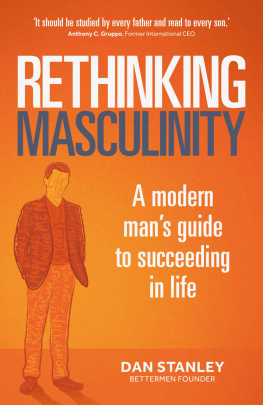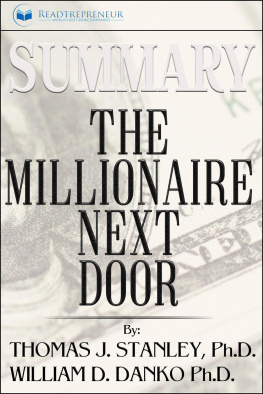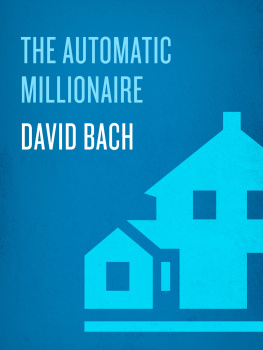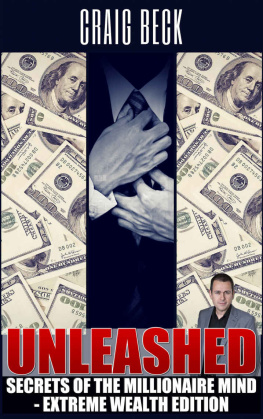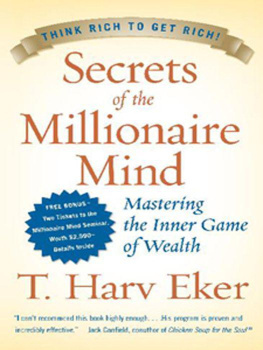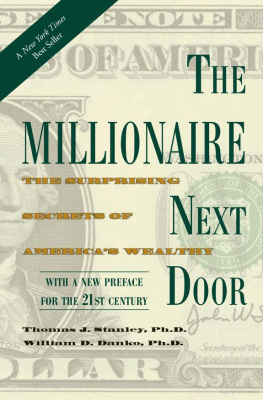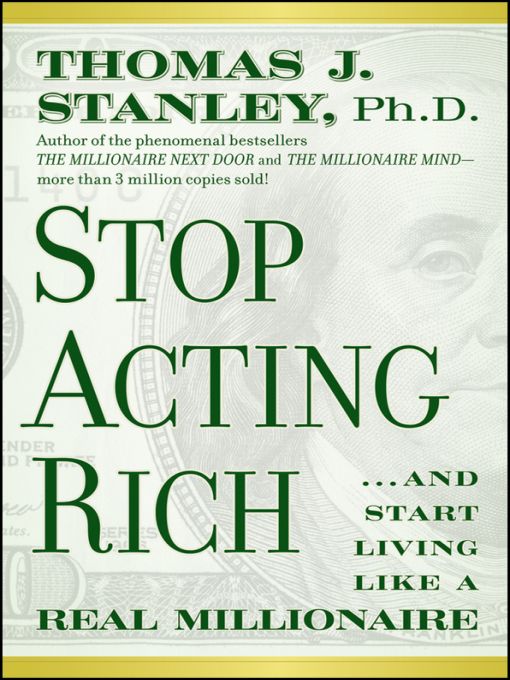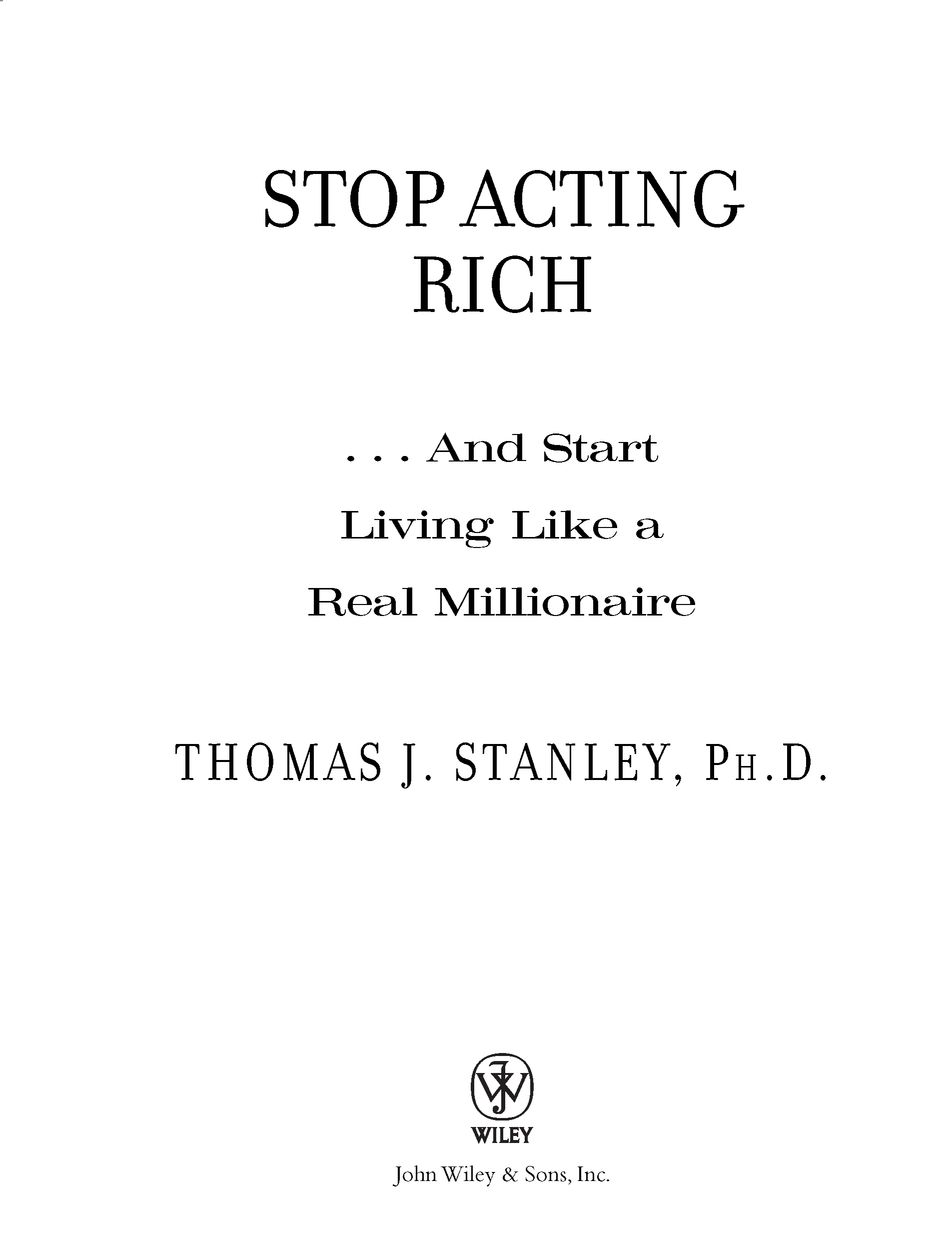Table of Contents
For Anna, Ryan, and Kate
List of Tables
Homeowners in America: High Income versus High Net Worth? 44
Homes of Millionaires in America: Average Value by Augmented Net Worth 48
Neighborhood Defined Consumption Lifestyles Where Millionaires Reside 50
Wealth-Producing Characteristics of Selected Occupations: High Income versus High Net Worth 53
Top 20 Ancestry Groups Who Own/Occupy Homes Valued at $1 Million or More: Total Number versus Concentration 57
Price Paid by Millionaires for Their Most Recent Haircut 60
Top 10 Brands of Watches Worn by Millionaires 91
Price of Wine Served by Millionaires 153
Prices Paid for Wine Contained Inside the Homes of Millionaires 154
Wine Inventory Owned by Millionaires 155
Price Typically Paid by Millionaires for Their Dinner at the Restaurant They Dine at Most Frequently 157
Stores for Clothing and Accessories Patronized by Millionaires According to the Most Recent Make of Motor Vehicles Acquired 199
Makes of Motor Vehicles Acquired by Millionaires 203
Popular Models of Motor Vehicles Acquired by Millionaires 205
Profile of Happy versus Unhappy High-Income-Producing Baby Boomers 224
Preface
Thirty years ago, I first defined the blue collar affluent, aka the millionaire next door, in a speech and paper that I delivered on behalf of the New York Stock Exchange. This began a lifetime journey of identifying and profiling the myths and realities of the rich.
I discovered that not all millionaires have high social status. In fact, those who are among the least productive in transforming their incomes into wealth are in the higher-status occupations. In a 1980 national study of multimillionaires, I found that half of the millionaires in America do not live in upscale neighborhoods. In 1988, I wrote my first book, Marketing to the Affluent, which essentially discussed how to market to the millionaire next door. After reading it, one of my colleagues at Georgia State University, Dr. David Schwartz, author of the perennial mega-bestseller The Magic of Thinking Big, suggested that I broaden my work to appeal to a much larger general audience. I followed Daves advice and wrote The Millionaire Next Door (1996), which answered the question: Who is the typical millionaire in America? This bestselling book exploded many common myths about the wealthy in America, revealing that their low-profile and frugal lifestyle were pervasive among this group.
After the success of The Millionaire Next Door, I continued my research with The Millionaire Mind (2000). In this book, I revealed the factors that millionaires, who had three times the wealth as those in The Millionaire Next Door, reported as being most important in explaining their economic success. Among those factors were integrity, discipline, social skills, a supportive spouse, leadership qualities, and having a love for ones vocation. Among the least important were luck, investing in the stock market, and having high academic achievement. I responded to the numerous queries I received from women about their lack of representation in my books by writing Millionaire Women Next Door in 2004. Women in business succeed because they work harder and are more frugal than their male counterparts. Women who fail in business typically love their product but not their business.
In Stop Acting Rich... And Start Living Like a Real Millionaire, I detail why so many people who are not rich hyperspend on luxuries. Often they think that collecting these expensive toys will enhance their overall satisfaction with life. But, as you will read in detail, happiness in life has little to do with what you wear, drive, eat, or drink. The people with the greatest satisfaction are those who live below their means. Even during the recent peaks of income production, the residential real estate market, and the bull stock market when the main survey for this book was undertaken, these millionaires maintained their habits of thrift and frugality. (See Appendix A for the survey details and Appendix B for the profile of millionaires.) In other words, increasing asset values did not cause the majority of wealthy people to hyperspend.
So who are hyperspenders really emulating? They are merely mimicking the behaviors of people like themselves, who are not rich but act in ways they think the economically successful people act.
Why is it that some people worth $10 million, $20 million, or even $30 million own few or no luxuries whatsoever? They know that satisfaction in life is not a function of what you can buy in a store. As you will come to learn in these pages, these people were conditioned by their parents to live below their means and were taught how to invest and manage money effectively. Accordingly, the billions of dollars poured into the marketing hype associated with promoting status products have had little effect on their consumption lifestyle. Also these people tend to associate with others who have similar attitudes, interests and activities, and beliefs.
The reason why so many homeowners today are having a difficult time making ends meet goes way beyond mortgage payments. When you trade up to a more expensive home, there is pressure for you to spend more on every conceivable product and service. Nothing has a greater impact on your wealth and your consumption than your choice of house and neighborhood. If you live in a pricey home in an exclusive community, you will spend more than you should and your ability to save and build wealth will be compromised. My research has found that most people who live in million-dollar homes are not millionaires. They may be high-income producers but, by trying to emulate glittering rich millionaires, they are living a treadmill existence. In the United States, there are three times more millionaires living in homes that have a market value of under $300,000 than there are living in homes valued at $1 million or more.
Given the recent reversals in the market value of stocks and homes, you may be asking: Is the millionaire market dead? While completing this book, a newspaper writer called and asked me what I thought about a published study claiming that the number of millionaires had significantly declined during the 2008-2009 period. I told her that I disagreed with these findings. Since 1980, I have consistently found that most millionaires do not have all of their wealth tied up in their stock portfolios or in their homes. When the investment gurus talk about diversification, they show how very parochial they are. Real safety is not in a diversified stock portfolio. One of the reasons that real millionaires are economically successful is that they think differently. Many a millionaire has told me that true diversity has much to do with controlling ones investments; no one can control the stock market. But you can, for example, control your own business, private investments, and money you lend to private parties. Not at any time during the past 30 years have I found that the typical millionaire had more than 30 percent of his wealth invested in publicly traded stocks. More often it is in the low to mid-20 percent range.These percentages are consistent with those found in studies conducted by the Internal Revenue Service, which has the best data set on millionaires in the world.






